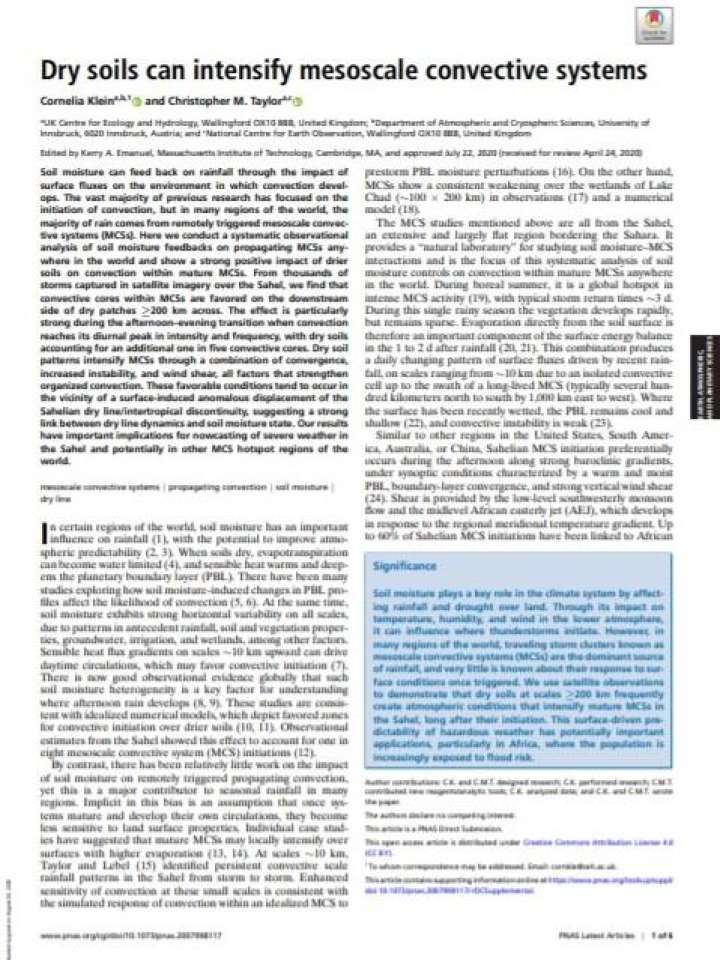Dry soils can intensify mesoscale convective systems
Soil moisture can feedback on rainfall through the impact of surface fluxes on the environment in which convection develops. The vast majority of previous research has focused on the initiation of convection, but in many regions of the world, the majority of rain comes from remotely triggered mesoscale convective systems (MCSs). Here we conduct a systematic observational analysis of soil moisture feedbacks on propagating MCSs anywhere in the world and show a strong positive impact of drier soils on convection within mature MCSs. From thousands of storms captured in satellite imagery over the Sahel, this study finds that convective cores within MCSs have favoured on the downstream side of dry patches ≥200 km across.
The effect is particularly strong during the afternoon-evening transition when convection reaches its diurnal peak in intensity and frequency, with dry soils accounting for an additional one in five convective cores. Dry soil patterns intensify MCSs through a combination of convergence, increased instability, and wind shear, all factors that strengthen organized convection. These favourable conditions tend to occur in the vicinity of a surface-induced anomalous displacement of the Sahelian dryline/intertropical discontinuity, suggesting a strong link between dry line dynamics and soil moisture state. The results have important implications for nowcasting of severe weather in the Sahel and potentially in other MCS hotspot regions of the world.
Explore further

